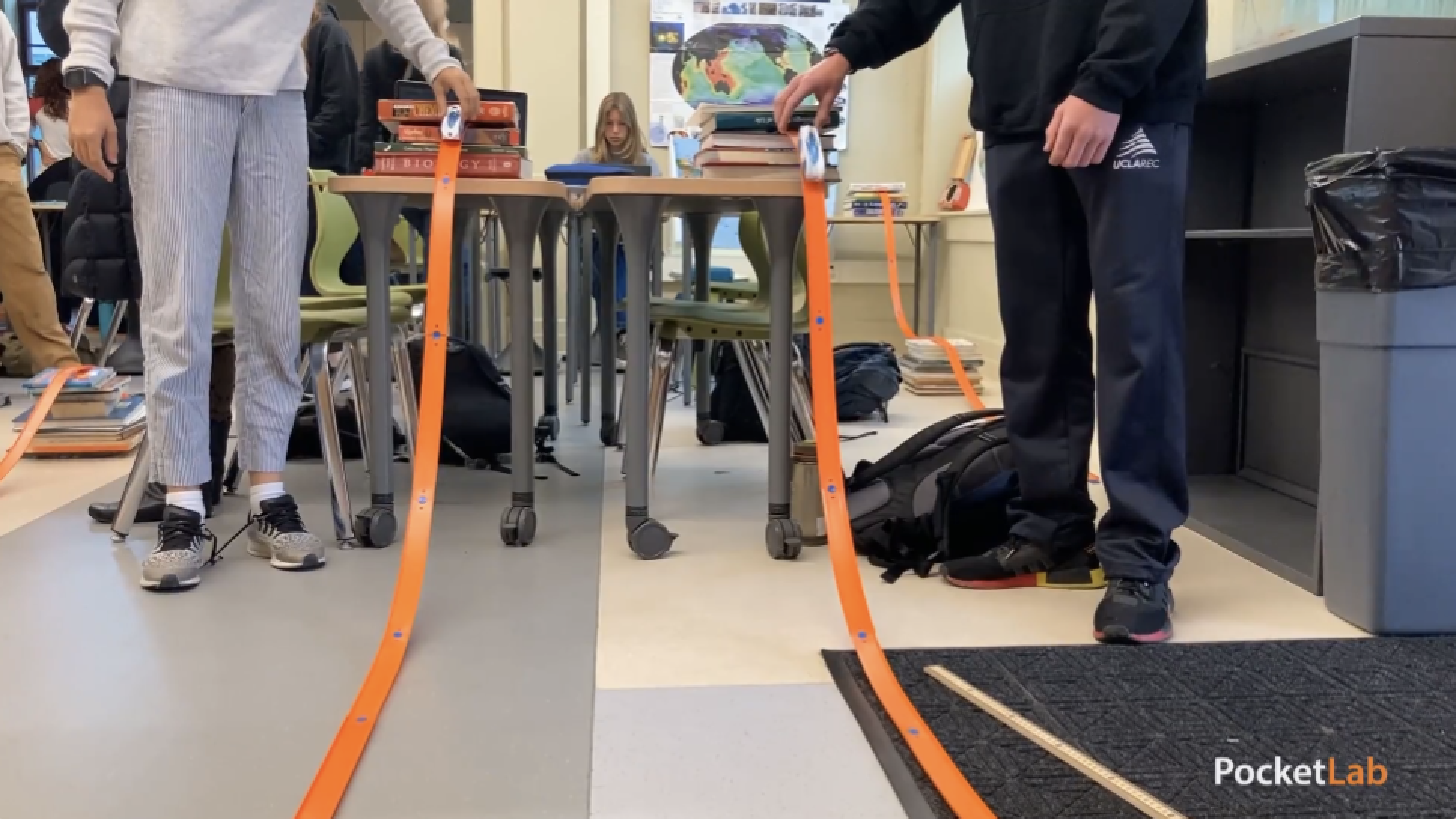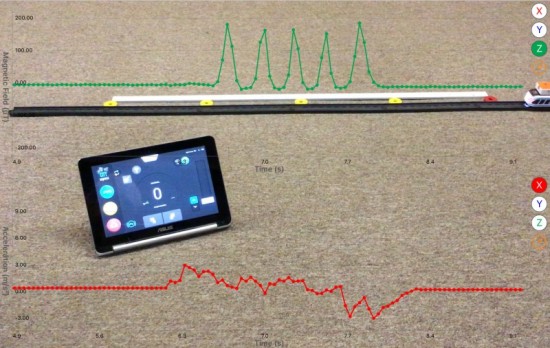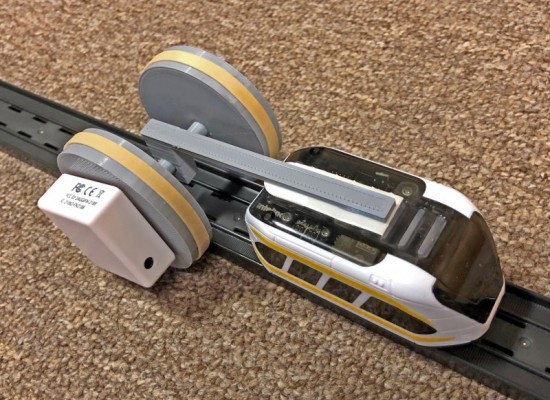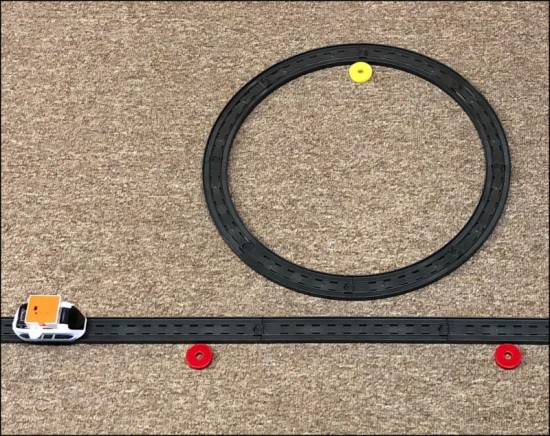
Upcoming free online events:

PocketLab and Notebook App Menu:

PocketLab Experiments: Face Mask Effectiveness Test
PocketLab STEM Superstars Mar 30, 2021 6:43:08 PM

Mr. Vandegrift is using a PocketLab Voyager (But you can also use Weather or Air ) to show his students the efficacy of face masks. Through data collection and visualization, the students are engaged and curious and want to keep investigating. Check out his YouTube video below.
Getting students excited about science and relating it to the real world around them is key to buy in from them. Myles Vandegrift gets that. We consider him one of our PocketLab STEM Superstars.
Myles Vandegrift is a passionate middle school science teacher who has been engaging students with his enthusiasm and genuine curiosity about the natural world for more than 28 years. He is deeply driven to connect with STEM students and make science meaningful and relevant to them. He cherishes the opportunity to inspire young people to reach their full potential and believes every STEM student can learn and achieve at high levels with enough time, support, and the right learning environment. Outside of the classroom, Myles connects with students through his work coaching skateboarding and the science olympiad team, and has taken students on expeditions to Catalina Island, Beijing China, Tambopata Research Center in the Amazonian Rainforest of Southeastern Peru, the lost Incan city of Machu Picchu, and Gabon Africa (Operation Canopy distance learning project). Myles also inspires future science teachers as an adjunct professor at Point Loma Nazarene University, which is where he earned his undergraduate degree in biology and MA in Teaching and Learning.
In this video he is using the humidity function of a PocketLab to measure how much moisture (the droplets we have heard so much about) is escaping past a face mask. On the chart logging the data you can see the rise and fall of this level. Replicating this same citizen science experiment with masks of varying materials will reveal which masks are most effective.
What percent humidity do you think your face mask lets through?
Check out this video and explore the lesson we created that you can do with your students.
We created this lesson in PocketLab Notebook
If you want to do this with your students, we created an entire no-prep lesson that you can use today. You can access it here . The lesson can be done using PocketLab Weather , PocketLab Air , or PocketLab Voyager .
If you have not already signed up for your free Notebook account, get registered and you can add up to 35 students to assign this lab to right away.
Sign Up for PocketLab Notebook

Using Flight Sensors in your Weather Balloon
NGSS Standards: (Earth's Systems),(Weather and Climate) John Huber is a rockstar teacher with Omaha Public Schools. He is one of our PocketLab...

First School in Florida to Use PocketLab Air to Monitor Air Pollution
Grade 5 STEM students at Saint Andrew’s School are the newest climate scientists on the block. They caught wind of startling air pollution statistics...

5 Best Practices for Project-Based Learning
Project-Based Learning (PBL) is a dynamic classroom approach in which students actively explore real-world problems and challenges and acquire a...
Return to PocketLab Home Page
Middle School Science
You can make experiments the most fun and engaging part of your science class. Experienced educators and curriculum specialists have developed each of these lessons, and we have tested them in real classrooms. PocketLab middle school lessons span across all the Next Generation Science Standard (NGSS) disciplines. Browse all the middle school lessons below or use the filters to search for specific content.
Polarized Light
Light travels in waves, but unlike waves on the ocean, they are much too small for us to see with the naked eye. A polarizer is a light filter that only allows light waves that are moving in one direction to pass through, letting us indirectly observe some of the wave properties of light. This aligned light that passed through a polarizer is called polarized light.
Periodic Motion of an Empty 3D Filament Reel
Introduction
Don't discard your school's empty 3D filament reels. There's a good chance that you and your students could come up with some interesting physics lab investigations using these reels. Attach Voyager or PocketLab One to the reel and the possibilities are endless! This lesson describes a unique experiment in which periodic motion is investigated using an empty 3D filament reel. Depending on the teacher's goals and amount of detail in the analysis of collected data, this lab could be used from the 4th grade through high school. The
Calibration Lesson: Intelino Smart Train and Voyager

Introduction to Calibration
Sensor-based inquiry is a dominant force in today’s science education, with the calibration of sensors being essential for high-quality measurement. Wikipedia® defines calibration as “the comparison of measurement values delivered by a device under test with those of a calibration standard of known accuracy.” In this lesson students will study the process of calibration in an experiment to determine the speed of the intelino engine as the accelerator is incremented in ten equally spaced steps from zero to full throt
Intelino / Voyager: Angular Velocity vs. Speed in Circular Motion

Have you ever felt like you are going in circles ? In this lesson you will have PocketLab Voyager going in circles while riding an intelino smart train engine. If you are not familiar with intelino, here is a quick overview. Designed for all ages, intelino is intuitive with its app, has built-in sensors to provide an interactive experience for the user, and is easily programmed with color snaps that allow the user to control intelino's actions. Most elementary and junior high school students enjoy playing with trains. So why not sneak some physic
Intelino / Voyager Lab: "Floor-it" Acceleration/Max Speed

The purpose of this lesson is to challenge your students to design an experiment for which data from PocketLab Voyager is used to determine the "floor-it" acceleration and maximum speed of the intelino smart train engine. Required data should be obtained in a single run of data collection by the PocketLab app. Figure 1 shows a picture of Voyager attached to the top of an intelino smart engine. Designed for all ages, intelino is intuitive with its app, has built-in sensors to provide an interactive experience for the user, and is easily programmed with colo
intelino/Voyager: Periodic Motion Lab
Periodic motion is motion that repeats itself in regular intervals. If the motion has characteristics that are sinusoidal, then the motion is said to be simple harmonic (SHM). In this lesson, periodic motion that is not simple harmonic is studied. Never-the-less, the motion shows many characteristics of SHM, as can be seen when studying the position, velocity, and acceleration graphs. This lab makes use of PocketLab Voyager that has hitched a ride on an " intelino® smart train " and is running on the VelocityLab app. Int
intelino/Voyager: 7-9 Math/Physical Science Slope Lab

Math students are typically introduced to the concept of slope in the 7th grade, learning that slope has to do with steepness . By the 8th grade many learn how to calculate the slope of a line as the rise divided by the run or rise over run . If the rise is positive, then the slope is positive (sloping upward). On the other hand, if the rise is negative, then the slope is negative (sloping downward). If the line is horizontal, then the slope is zero.
What is Ocean Acidification? (K-MS)

Climate change is at the forefront of environmental concerns and it often revolves around carbon dioxide in the atmosphere and its effect on average temperature. However, carbon dioxide is not only increasing in the atmosphere but in the ocean as well. The source of this carbon dioxide is the much talked about atmospheric carbon dioxide, as carbon dioxide is soluble in water.
Pi from Voyager and an Intelino Smart Train

Introduction to Pi
There is probably no number that has received more interest since ancient times that the number pi, symbolized by the Greek letter π . Originally defined as the ratio of the circumference of a circle to its diameter, it has been given approximate values including 3.14 and 22/7. Proven to be an irrational number, supercomputers have computed the value of pi to more than one trillion digits.
intelino / Voyager Lab: Stopping Distance vs. Speed

Have you ever been told not to follow too close to the driver ahead of you? To keep a safe distance? To abide by the "3-second rule"? To keep a distance of at least one car length for every ten miles per hour of speed? These questions all deal with the issue of stopping distance versus speed in order to avoid crashes. A great way to investigate the relationship between stopping distance and speed is to interface Voyager with an " intelino® smart train ". Designed for all ages, intelino is intuitive with its app, has bui
To access this free lesson, please sign up to receive communications from us:

POCKET SCIENCE LAB
Use your phone or desktop with the pslab app and convert it into a pocket science lab. create even more experiments by extending it with standard sensors and the open source pslab board..


What is the Pocket Science Lab Project
In the Pocket Science Lab Project we create phone and desktop applications to collect measurements and data to solve global problems with science and build a sustainable world. With the PSLab mobile and desktop apps it is possible to use sensors of a phone or desktop PC to collect measurements and data. The app comes with a built-in Oscilloscope, Multimeter, Wave Generator, Logic Analyzer, Power Source, and we are constantly adding more digital instruments or even robotic controls. With PSLab applications your phone or PC becomes like many devices in one. Adding widely available Open Standards sensors and the PSLab board you are able extend your device to be a complete lab in the pocket. You can collect air data, temperature, water quality, the level of radioactivity and anything you could imagine. Once you are ready you can share the data, draw scientific conclusions, and start to take action to change the world around you to be more sustainable. And as a developer you are able to create your own plugins and front-ends to integrate the PSLab science libraries into other solutions.
What is the PSLab Board
The Open Source PSLab board is a small USB powered hardware extension for your Android phone or PC that adds additional sensor capabilities to your phone and enables you to connect to possibly hundreds of available sensors. Simply connect two wires to the relevant pins and start measuring. You can use the PSLab apps to view and collect the data. All sensors following the I²C are compatible and it works without the need for programming. What experiments you do is just limited to your imagination! If you are a developer you can also add new features to the device by implementing functionalities in the firmware or changing the schematics of the hardware itself. G et your Open Hardware Pocket Science Lab extension or produce your own using the available schematics and start experimenting.
Who is it for
It can be used by anyone! Teachers, students, hobbyists, scientists, anyone who wants to know what is going around yourself.
What can it do
It can function as a..

Oscilloscope

Power Source

Accelerometer
Logic Analyzer

Wave Generator

and many more without the need of programming because we provide it with the software!
What are the specifications
4-Channel up to 2MSPS Oscilloscope. Software selectable amplification stages 12-bit Voltmeter with programmable gain. Input ranges from +/-10 mV to +/-16 V 3x 12-bit Programmable voltage sources +/-3.3 V,+/-5V,0-3 V 12-bit Programmable current source. 0-3.3 mA Supports Advanced Plugins/Add-on Modules 4-Channel, 4 MHz, Logic Analyzer 2x Sine/Triangular wave generators. 5 Hz to 5 KHz. Manual amplitude control for SI1 4x PWM generators. 15 nS resolution. Up to 8 MHz Capacitance Measurement. pF to uF range I2C, UART data buses for Accel/gyros/humidity/temperature modules etc
Which software can it be used with
Simply use our Open Source PSLab Android app from the app stores or the Python Desktop app to run your experiments.

How can it be connected to the phone or PC
Pocket Science Lab is directly powered through the USB connection. It doesn’t need any other external power source. All you need to do is to attach it to the phone via a USB OTG cable if you are using the mobile app or directly to your laptop’s USB port if you are using the desktop app.
What sensors are available
PSLab has digital pins to plug in sensors and extend the functionality even further. The device supports any sensor using the long-established I2C standard. Hundreds of compatible sensors are available on the market. I2C sensors are used widely in consumer and industry devices and for example with Arduino boards. A list of recommended components and sensors is available here .
How to use ESP WiFi and Bluetooth
PSLab has slots for ESP and Bluetooth chips. The functionalities are already implemented in the firmware. Solder the chips to the dedicated slots. For the WiFi functionality also don’t forget to install the relevant packages on the ESP WiFi chip and you are ready to go. Devices can be powered through an external battery when they are accessed through Bluetooth or WiFI.
Who develops it and how to help
PSLab is developed by FOSSASIA in Singapore and OpnTec in Germany together with a global community. You can join and contribute to the development by collaborating on the Android app , desktop apps , firmware and hardware on GitHub. Please join development if you are developer or learn and promote Open Science and PSLab.
What is the vision
The vision of PSLab is to miniaturize laboratories and make scientific instruments accessible for everyone. There are a lot of problems in the world from environmental problems, to daily challenges in our personal lives, to challenges we face in work life. In order to solve these problems we need to understand the world around us. Open Source labs that are small and accessible enable us to do our own experiments and collect our own independent data to do just that. We can also verify official data, e.g. air quality, by doing our own measurements using sensors. Or, use the out of the box tools for measurements of electronics devices and components to ensure they work as expected. Whatever measurements we do freely licensed Open Source applications and hardware ensure that experiments are replicable and verifiable. They are trustworthy because all layers are open and can be build up from the ground by anyone.
Order your Pocket Science Lab now!
Please select the shop closest to you.

European Union
You are interested in becoming a vendor of PSLab hardware? Please get in touch here .
Proudly developed by

Lorenz Gerber
Lorenz currently develops Cloud High Performance Computing pipelines for Bioinformatics applications at the Genome Institute of Singapore

Padmal is based in Sweden. He is an Electronic and Telecommunication Engineering graduate with a first class degree from the University of Moratuwa, Sri Lanka. Being a past summer intern building up the PSLab project his interests lies in hardware/firmware development

Marco A. Gutiérrez
Marco A. Gutiérrez is a PhD holder in cognitive vision planning for robotics systems from Spain. He has contributed to RoboComp, the Point Cloud Library and Open Perception.
Want to get a Pocket Science Lab or already have one and have some questions?
Check out the support page and read through the faq or get one now.

IMAGES
COMMENTS
In this video, listen to a teacher who utilizes PocketLab in their weekly lessons, showcasing how it revolutionizes STEM education through real-time experiments and data analysis. Read the below testimonials from educators, offering a glimpse into the many positive experiences shared by educators on how PocketLab enhances their teaching.
Quick Science Experiments in 90 Seconds PocketLab is jam-packed with sensors for hundreds of science experiments. It's easy to set up and get started, which allows for quick explorations into questions you're curious about. Check out this video as an example. We did eight different science experiments in 90 seconds.
Unbox the device and watch the Getting Started video on the right. Pair it with your smartphone or computer and take some measurements. • For the PocketLab Voyager, try taking a measurement of a magnetic field by moving the device around your smartphone to find the hidden magnets inside your phone. • For the PocketLab Air, try taking a measurement of the air by exhaling into the device to ...
PocketLab is a wireless sensor for exploring the world and building science experiments. We built PocketLab for the curious explorers, educators, students, and makers to bring science, technology, engineering, and math (STEM) to life like never before. ... engineers, and teachers. We are passionate about getting science out of the lab and into ...
A lab report is a great way to summarize how you conducted your experiment and tested your hypothesis, the data collected, and any conclusions you can draw about the scientific question that was tested. In your lab report include: Your original hypothesis from the beginning of the lab (in this case a description of your sketches).
Lab Notes, The PocketLab Blog Purchase / Quote Shop Now ... PocketLab Experiments: Face Mask Effectiveness Test. PocketLab STEM Superstars Mar 30, 2021 6:43:08 PM pocketlab air PocketLab Voyager PocketLab Weather. Mr. Vandegrift is ...
Prepare your students for real-world problem solving and open-ended lab experiments. Experienced educators and curriculum specialists have developed each of these lessons, and we have tested them in real classrooms. PocketLab physics lessons cover introductory and advanced topics from one-dimensional motion to electricity and magnetism to simple harmonic motion. Browse all the high school and ...
You can make experiments the most fun and engaging part of your science class. Experienced educators and curriculum specialists have developed each of these lessons, and we have tested them in real classrooms. PocketLab middle school lessons span across all the Next Generation Science Standard (NGSS) disciplines. Browse all the middle school lessons below or use the filters to search for ...
The PocketLab is a science experiment tool used for hands-on experiments within our Texas curriculum. Do science experiments at home with the PocketLab.
POCKET SCIENCE LAB Use Your Phone or Desktop with the PSLab App and Convert it into a Pocket Science Lab. Create even More Experiments by Extending it with Standard Sensors and the Open Source PSLab Board. GET PSLAB BOARD What…